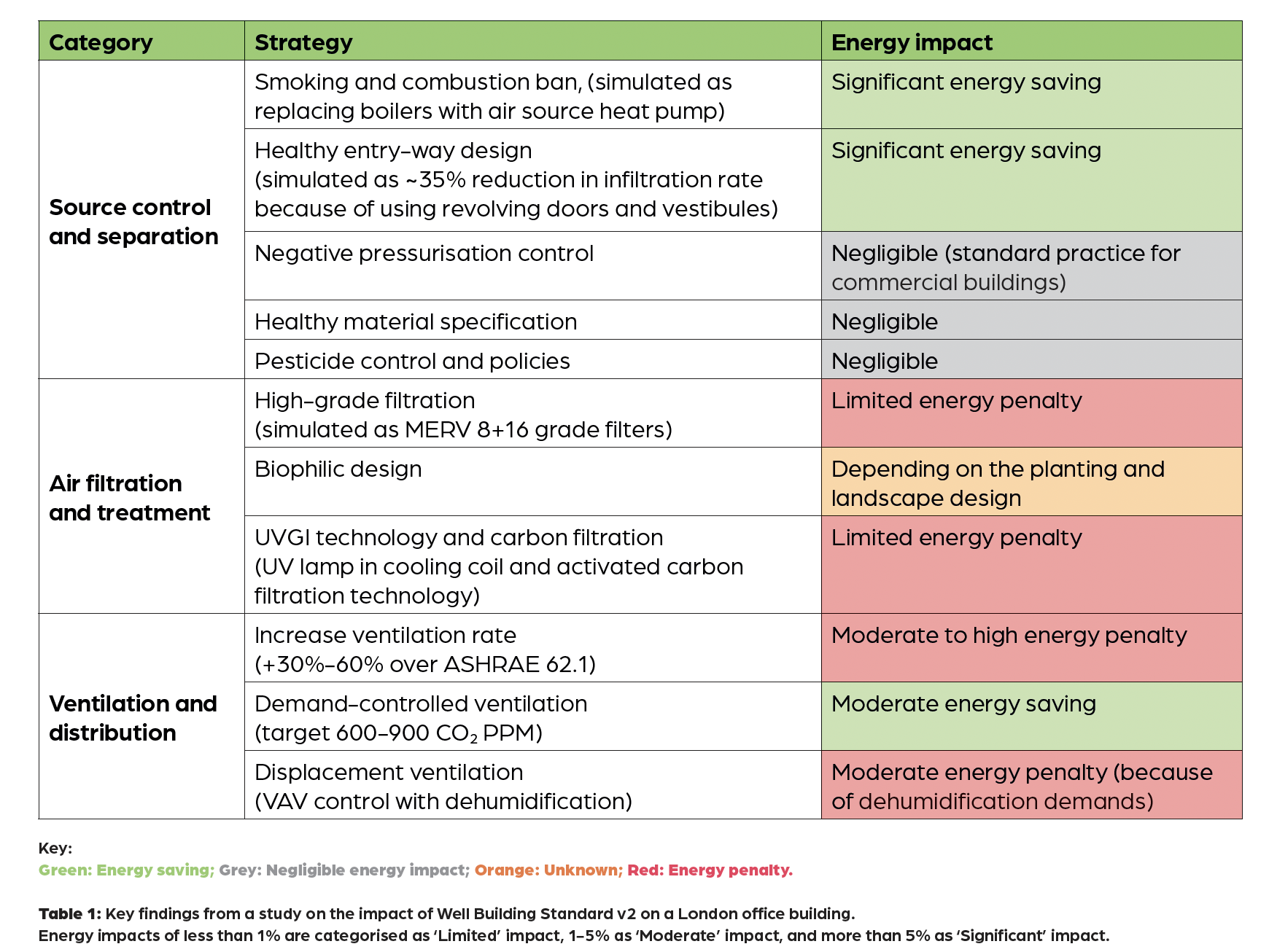
People spend approximately 80-90% of their time indoors1, so indoor air quality (IAQ) is a critical consideration in human-centric building design. Simultaneously, there is increasing pressure to achieve net zero carbon by 2050 – and operational net zero by 2030, according to the World Green Building Council’s roadmap.
With the recent launch of the pilot version of the UK Net Zero Carbon Buildings Standard, balancing IAQ while hitting carbon-reduction targets will be a significant challenge for designers.
In 2021, Foster + Partners’ Environmental Engineering Group initiated a study to understand the energy penalty of implementing key IAQ control strategies, and found that, for a number of them, there was a penalty, as described below.
The Well Building Standard v2 summarises key indoor air pollutants, their sources, and general design strategies for mitigating them to recommended targets. From this summary, the key IAQ control strategies can be grouped as:
- Source control and separation: smoking and combustion ban; healthy entry-way design; negative pressurisation in polluted areas; healthy material specification; pesticide control and policies
- Air filtration and treatment: high-grade filtration; biophilic design; ultraviolet germicidal irradiation (UVGI) technology
- Ventilation and distribution: increase ventilation rate; demand-controlled ventilation (DCV); displacement ventilation or underfloor air distribution in large-volume spaces.
- Some of these control strategies require additional thought, because of possible increases in energy use, and consideration of a project in its locality and nearby outdoor pollution sources.
Mainly based on the above strategies, Foster + Partners’ 2021 study analysed the impact of Well Building Standard v2 on the office building2. The study assessed wellbeing strategies on operational energy performance in three distinct climates. Table 1 shows a summary of its key findings related to IAQ and associated projected energy impact for the modelled office building in London’s climate. Note, embodied carbon impact was not assessed in this research, but should be carefully studied.

Many air quality management strategies have become standard practice in commercial building design, and are often regulated by local codes or regulations, such as prescribed extraction rates in highly polluted areas. As a result, these measures typically have a negligible impact on energy consumption. Additionally, policies related to interior finishes and operational protocols often have minimal or no energy implications.
These low- or no-energy strategies, alongside some that contribute directly to energy savings, offer an effective balance between health, wellbeing and energy/carbon reduction. For example, even advanced air filtration systems used in commercial settings can be optimised through proper specification and regular maintenance, ensuring maximum health and wellbeing benefits without increasing energy use significantly.
High-energy impact strategies, such as increasing outdoor air rates, can be balanced by employing DCV systems. These ensure pollutants generated in the indoor environment (typically CO2 and volatile organic compounds) are diluted during fully occupied hours, while allowing the building to scale down ventilation, fan use and air conditioning during non-peak periods, moderately reducing energy consumption. This allows designers to prioritise IAQ while minimising the overall energy impact.
The industry has realised synergies and conflicts exist between the net zero vision and health and wellbeing. Environmental assessment standards such as Well, Breeam and Leed have made efforts to include both topics or enable crosswalk between standards.
The upcoming Leed v5 draft3 places stronger emphasis on health and wellbeing, including performance-based IAQ criteria and monitoring requirements as optional credits. Similarly, Breeam v74 has expanded its focus on health and wellbeing significantly, introducing new credit intentions and requirements.
On the legislative side, a revision of the European Commission’s Energy Performance of Buildings Directive came into force in May 20245. It sets ambitious targets to achieve zero emissions and decarbonisation by 2050, while also supporting better IAQ, and requires the implementation of devices for measuring and controlling IAQ.
About the authors
Jiannan Luo is associate partner and senior environmental design analyst in the EEG team at Foster + Partners. Thanks to UCL PhD student Emma Gibbons and Hoare Lea senior associate Christelle Escoffier for their input
References:
- Bunn S, Duffield G (UK Parliament POST) (2023), Research Briefing – IAQ, bit.ly/UKRBIAQ
- Luo J, Idzikowski I and Abou-zaki A, (2021), Impact of Well Building Standard v2 on the office building energy performance, bit.ly/CJFPWell
- US Green Building Council (2024), LEED v5, www.usgbc.org/leed/v5
- Building Research Establishment (2024), Breeam New Construction Version 7, bit.ly/CJBREv7
- EC (2024), Energy Performance of Buildings Directive, bit.ly/CJEPBD24
